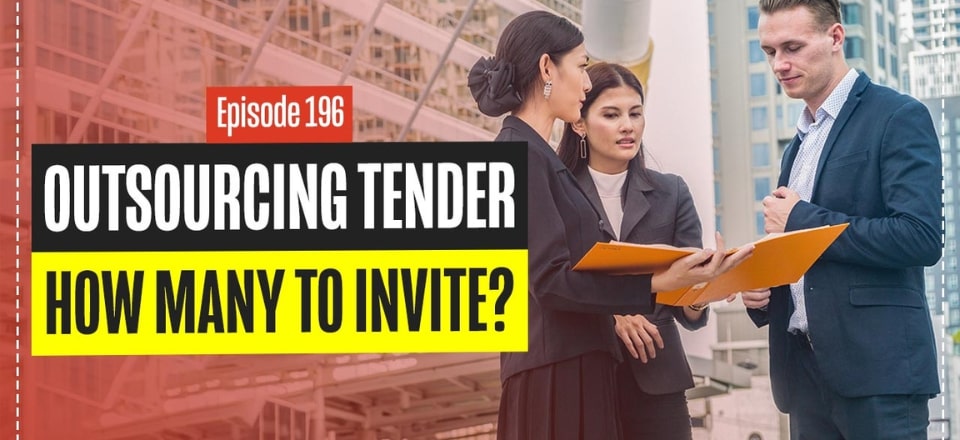How many suppliers should be part of your logistics outsourcing tender?
It’s a question I get asked constantly, and it’s an important one to address.
There’s no one-size-fits-all answer, but the right approach makes all the difference.
Watch the full video to learn how to decide!
When it comes to logistics outsourcing, one of the most frequently asked questions is, how many suppliers should we invite to the tender process? Whether you refer to it as an RFT (Request for Tender), RFP (Request for Proposal), or RFQ (Request for Quotation), the goal is to engage suppliers who can deliver the right services—whether that’s warehousing, distribution, or other 3PL services.
The Challenge of Open vs. Closed Tenders
First, let’s talk about the difference between open and closed tenders. Open tenders are common in government departments or very large corporates. These tenders are open to anyone who wants to bid, which sounds good in theory, but in practice, it often results in a flood of bids that may or may not be relevant. You end up sifting through too many responses, some of which don’t even meet your requirements. This can make the whole process feel like a bit of a mess.
On the other hand, closed tenders involve selecting a smaller group of suppliers to invite to the process. This is the approach I’ve used for over 25 years because it helps streamline things. By narrowing the pool to suppliers who are genuinely capable of meeting your needs, you get better responses, and everyone saves time.
Why You Need to Be an Informed Buyer?
The key to a successful tender process is being an informed buyer. Think of it like hiring a contractor to renovate your bathroom. Would you throw an open call for bids to anyone who renovates bathrooms? No—because you’d get all sorts of irrelevant responses, and it would be difficult to find the right fit. Instead, you’d narrow it down to a handful of contractors who specialize in the style and budget you want, ensuring better results.
It’s the same with logistics outsourcing. You need to narrow your list of suppliers so that you’re attracting the right companies who can meet your exact needs.
How Many Suppliers Should You Invite?
The goal of the tender process is to end up with three solid contenders—suppliers who meet your requirements and are within your budget. To achieve this, I recommend inviting about five suppliers to start. Why five? Because not all of them will make it to the end. Some will drop out, especially with the current tight market conditions where 3PLs and warehousing space are in high demand.
You should always include your current supplier in the process. This gives them the chance to reflect on their performance and come up with new ideas to improve. Plus, it’s wise to add a newcomer or an outsider to the mix. Maybe it’s a fresh player in the market, or a supplier that’s been recommended by a trusted source.
The key takeaway here is to keep the list focused. Inviting 10 or more suppliers can make you look like you don’t understand the market, and it can also reduce the enthusiasm of the suppliers who are bidding. If they know they’re competing against dozens of other companies, they won’t put in as much effort. Five suppliers is the sweet spot. It’s enough to generate competition, but not so many that it feels overwhelming.
Related articles on this topic have appeared throughout our website, check them out:
- Supply Chain Cost Reduction: The Dangers of Supplier Squeezing
- Supplier Selection: Evaluate the Risks to Reap the Rewards
- How to Address Chronic Poor Supplier Performance
Editor’s Note: The content of this post was originally published on Logistics Bureau’s website dated March 22, 2023, under the title “Logistics Outsourcing Tender – How Many Suppliers to Invite?“.


